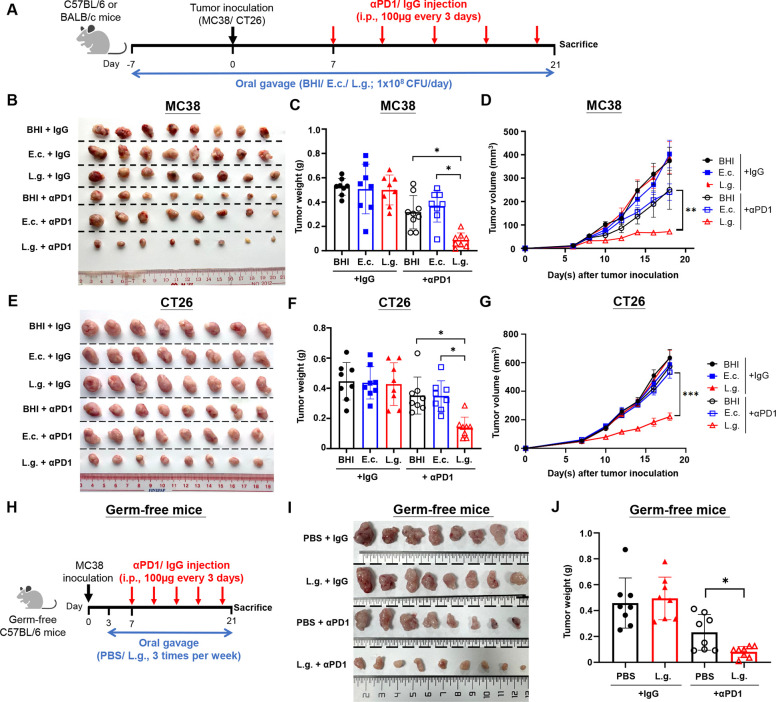Figure 1.
Lactobacillus gallinarum improved anti-PD1 efficacy in MC38 and CT26 syngeneic mouse models. (A) Schematic diagram of experimental design for syngeneic mouse model. L. gallinarum, in combination with anti-PD1 therapy, significantly inhibited tumour growth in MC38 syngeneic mouse model (microsatellite instability-high model), as evidenced by (B) representative tumour pictures, (C) tumour weight and (D) tumour volume. L. gallinarum also promoted anti-PD1 efficacy in CT26 syngeneic mouse model, an microsatellite instability-low model, as supported by (E) representative tumour pictures, (F) tumour weight and (G) tumour volume. (H) Schematic diagram of experimental design of germ-free mouse model. L. gallinarum mono-colonisation improved anti-PD1 efficacy in germ-free MC38 tumour-bearing mice, as shown by (I) representative tumour picture and (J) tumour weight. Statistical significance was determined by Kruskal-Wallis test, followed by Dunn’s multiple comparison test. Statistical significance of tumour growth curve over time was determined by two-way analysis of variance. *p<0.05, **p<0.01, ***p<0.001. BHI, brain heart infusion; E.c., E. coli; L.g., L. gallinarum; PBS, phosphate-buffered saline; PD1, programmed cell death protein 1; αPD1, anti-PD1.

